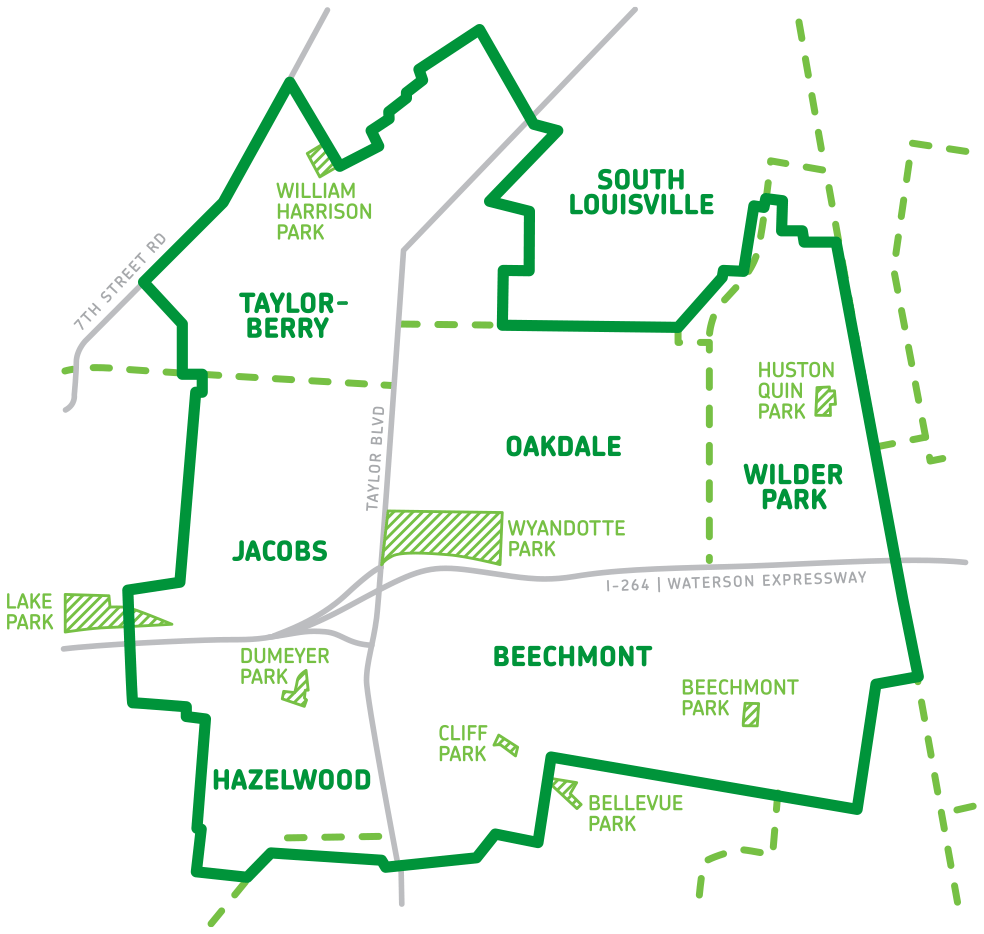Green Heart goals.
This project is examining, for the first time, if increasing greenness in an urban community reduces the levels of air pollution in the neighborhood, decreases the risk of heart disease, and increases outdoor activity and relationships between neighbors. Green Heart will help us discover:
- How to plant trees in urban communities to maximize the removal of air pollution
- If increasing green space affects the risks of developing obesity, diabetes, and heart disease
- If increasing urban green space reduces mental stress, enhances social cohesion, and increases physical activity
- If urban green space affects crime rates, property values, storm water runoff, energy use, and heat island effect.
Drivers of Health
Elements we are evaluating in each community that are believed to impact health.
img.drivers-of-health{float:right; margin-left:25px; width: 425px; margin-top: 50px;} @media only screen and (max-width: 1007px) {img.drivers-of-health{width:100%; margin:0; float: none;}}
COMMUNITY
Volunteers, stewards, partner organizations.
AIR QUALITY DATA
Gathered from fixed and mobile air monitors.
BUILDINGS
Residential, commercial.
VEGETATION
Trees, grasses and shrubs.
INFRASTRUCTURE
Major and minor roadways.
Green Heart neighborhoods.
To find the ideal location for Green Heart, we evaluated existing tree cover, major roadways, population density, plantable space, and neighborhood characteristics throughout Louisville. From this assessment, we chose a three-square-mile area in South Louisville encompassing the following communities:
- Beechmont
- Hazelwood
- Jacobs
- Oakdale
- Taylor-Berry
- Wilder Park
The study area is home to 22,100 residents. About 82% of residents own their home and the median household income is $27,000.

Study Timeline
Gathering baseline measurements in 2018 and 2019
- Monitored levels of air pollution around roadways and residential areas.
- Recorded the number, type, location, and health status of trees.
- Treated ash trees to protect them from the invasive emerald ash borer.
- Recruited more than 700 people to participate in the HEAL Study and recorded baseline health, stress levels, lifestyle and relationships, and disease risk.
Greening from 2019 to 2022
- Plant thousands of trees to create a robust and sustainable ecosystem maximized to remove air pollution.
Responding to the COVID-19 pandemic in 2020 and 2021
- COVID-19 infection, caused by the SARS-CoV-2 virus, has unknown impacts on the long-term health of individuals. To ensure that our final results are as reliable as possible, the HEAL Study repeated recruitment and baseline health measures in 2021.
Monitoring from 2020 to 2023
- Track changes in greenness, air pollution, physical and mental health, and social cohesion.
Assessing and Comparing in 2023
- Compare changes in pollution, physical and mental health, and social cohesion from before greening to after greening.
Continuing Research in 2024
- Our research teams will continue to monitor environmental factors and the health of those who live in our study neighborhoods.
Louisville’s Tree Canopy
Research shows that people living in neighborhoods with busy streets and high levels of roadway air pollution, have a higher risk of heart disease than people living in neighborhoods with more green space. Louisville’s trees currently remove more than four million pounds of ground-level ozone and more than one million pounds of particulate matter annually from the air we breathe. The health value of removing that much air pollution is estimated at more than $10 million every year.
However, Louisville’s urban tree canopy is 37% – lower than the 44% recommended canopy for a healthy city. Each year Louisville loses an average of 54,000 trees, and Louisville has lost more than 6,500 acres of trees since 2004. If this trend continues, our tree canopy may decrease to 31% in the next ten years.
Through Green Heart Louisville, our researchers will assess the health and social benefits of increasing green space and tree canopy by:
- Discovering new relationships between nature and health
- Discovering new ways to help prevent heart disease, diabetes, and obesity without medications
- Developing of a scientifically validated “greenprint” for greening urban spaces to reduce air pollution that could be replicated in cities around the world
- Creating a new model for healthy urban development